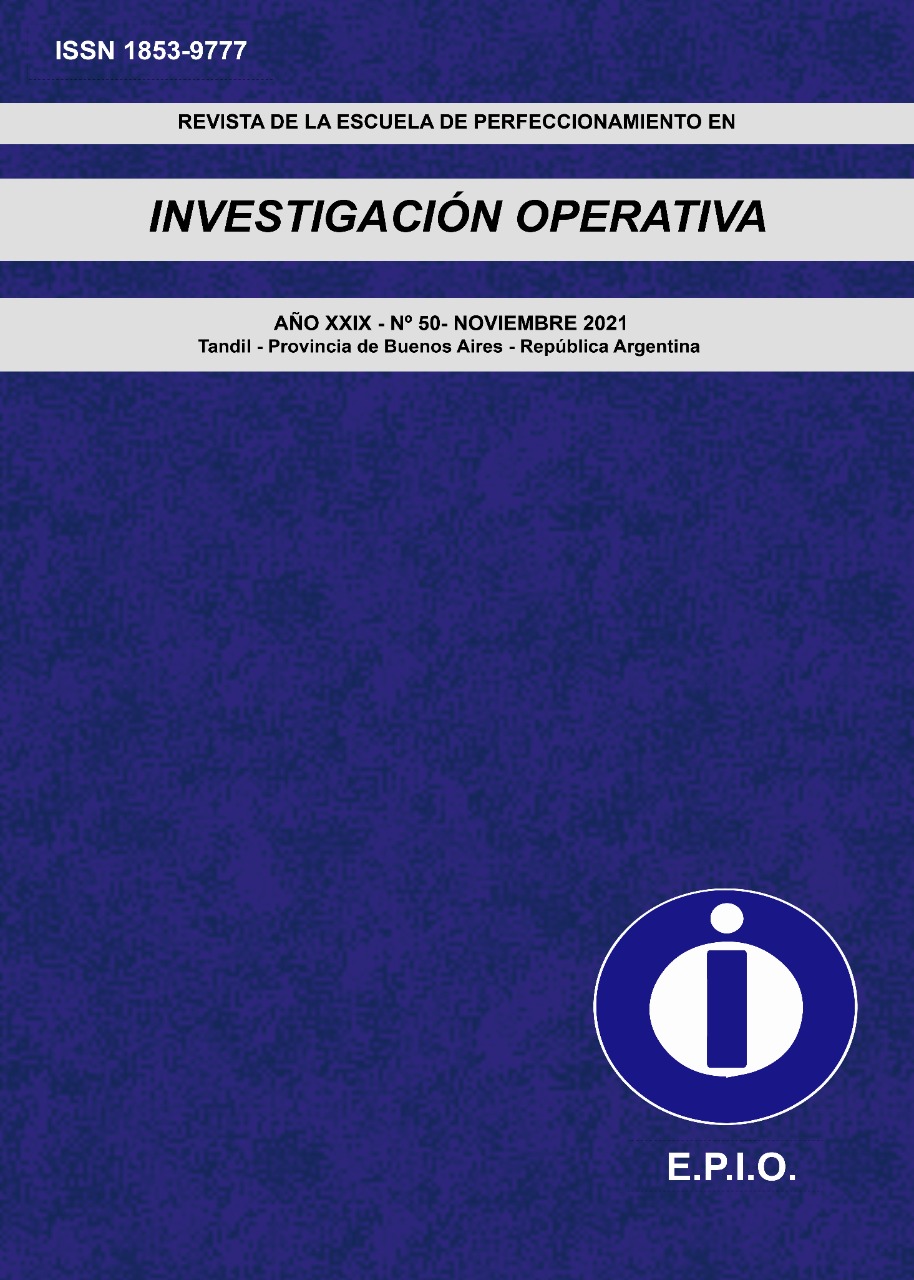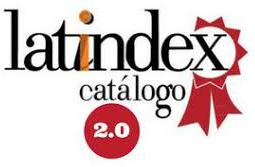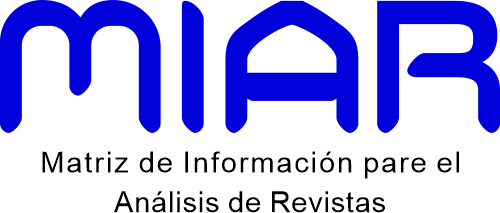The Fibonacci sequence and energy efficiency mechanisms: towards rational and efficient energy use at the macroscopic level
Keywords:
fibonacci sequence, golden ratio, energy ratio elasticity, energy efficiency, energy intensity elasticity, sustainable economic developmentAbstract
The exacerbated emissions of atmospheric carbon, product of more than a century of anthropogenic activities, have allowed humanity and several other species in the planet to navigate aimlessly in a huge ocean of climate crisis.
The development of new scientific paradigms, the consolidation of new climate governance systems and the implementation of innovative energy management systems is not only a significant need but also a priority for sovereign States on all continents.
In this work, a brief review is presented of the scientific discoveries of the last decades that have incorporated the Fibonacci number sequence at the microscopic level, with important results at the technological, energy and environmental level.
In this sense, if energy, as many other elements on the universe, has a behavioral structure compatible with the F numbers, we should start talking about concepts such as the Fibonacci space-time-energy dimension.
The design of energy efficiency mechanisms based on the Fibonacci sequence constitutes a challenge on a macroscopic scale that would allow improving energy, economic and natural resources management, thus cooperating with the reduction of energy intensity and atmospheric carbon emissions.
Downloads
References
Ali, M. et al. (2015). Energy-Efficient Abundant-Data Computing: The N3XT 1,000x. Computer, 48(12), 24-33.
Atwater, H. y Polman, A. (2010). Plasmonics for improved photovoltaic devices. Nature Materials, 9, 205-213.
Atwater, H. y Polman, A. (2012). Photonic design principles for ultrahigh-efficiency photovoltaics. Nature Materials, 11, 174-177.
Bindi, L., Steinhardt, P., Yao, N. y Lu, P. (2009). Natural Quasicrystals. Science, 324(5932), 1306-1309.
Bleher, P. M. (1990). The Energy Level Spacing for Two Harmonic Oscillators with Golden Mean Ratio of Frequencies. Journal of Statistical Physics, 61 (3-4), 869-876.
Camarda, M. F. (2018). Teoría de Juegos en el campo de la Eficiencia Energética: Análisis de la dinámica Industrial en la búsqueda de un equilibrio de Nash eficiente. Revista EPIO, 26(44), 41-60.
Camarda, M. F. (2020). Just-in-Time y Eficiencia Energética. Implicancias en los Sistemas de Gestión de la Energía y Procesos de Descarbonización de Sistemas Industriales. Revista EPIO, 28(48), 58-77.
Coldea, R. et al. (2010). Quantum criticality in an-Ising Chain: Experimental evidence for Emergent E8 symmetry. Environmental Science & Technology, 36(24), 5504-5510.
Comisión Económica para América Latina y el Caribe (CEPAL) (2018). Segundo informe anual sobre el progreso y los desafíos regionales de la Agenda 2030 para el Desarrollo Sostenible en América Latina y el Caribe, Santiago de Chile, 2018, 1-181.
Cruz Sampedro, J. y Tetlalmatzi Montiel, M. (2010). POEM’s and Newton´s Aerodynamic Frustrum. The College Mathematics Journal, 41(2),145-153.
Ferreira, P. (2010). Requerimientos de Energía en los Procesos de Fabricación a Nanoescala. Lámpsakos, 4, 36-43.
Ferry, V., Atwater, H. y Polman, A. (2011). Modeling Light Trapping in Nanostructured Solar Cells. ACS Nano, 5(12), 10055-10064.
Figueroa, C., Castro, L., Fox, J. y Lozano, M. (2013). La Secuencia de Fibonacci y el Número de Oro en Ingeniería Eléctrica y Análisis Numérico. Revista Formación Universitaria, Centro de Información Tecnológica (CIT), La Serena, Chile, 6(2), 23-32.
Giannini, V., Fernández-Dominguez, A., Heck, S. y Maier, S. (2011). Plasmonics Nanoantennas: Fundamentals and their use in controlling the radiative properties of nanoemitters. Chemical Reviews, 111(6), 3888-3912.
Ghulinyan, M., Oton, C., Dal Negro, L., Pavesi, L., Sapienza, R., Colocci, M. y Wiersma, D. (2005). Light-pulse propagation in Fibonacci quasicrystals. Physical Review B, 71(9).
Ghyka, M. (1978a). El Número de Oro, Tomo I los Ritmos, Editorial Poseidón.
Ghyka, M. (1978b). El Número de Oro, Tomo II los Ritos, Editorial Poseidón.
Ghyka, M. (1979). Estética de las Proporcionas en la Naturaleza y en las Artes, Editorial Poseidón.
Gómez, G., Sella Piedrabuena, L. y Mathé, L. (2013). “Eficiencia Energética”. En Matriz de recursos energéticos de la Provincia de Córdoba, Devalis S. (Ed.), Editorial Copiar, Córdoba, República Argentina, 95-129.
González Zacarías, C., Palomino Ovando, M. A. y Cocoletzi, G. H. (2010). Los números de Fibonacci en la naturaleza y los sistemas nanoestructurados artificiales. Revista Interdisciplinaria en Nanociencias y Nanotecnologías, Universidad Nacional Autónoma de México, 3(1), 15-28.
Heyrovska, R. (2013a). Atomic and Ionic Radii of Elements and Bohr Radii from Ionization Potentials are Linked Through the Golden Ratio. International Journal of Sciences, vol. 2, marzo 2013.
Heyrovska, R. (2013b). Atomic, Ionic and Bohr Radii Linked via the Golden Ratio for Elements of Groups 1 - 8 including Lanthanides and Actinides. International Journal of Sciences, vol. 2, abril 2013.
Heyrovska, R. (2013c). Golden Ratio Based Fine Structure Constant and Rydberg Constant for Hydrogen Spectra. International Journal of Sciences, vol. 2, mayo 2013.
Hutchison, J. (2016). The road to sustainable nanotechnology: challenges, progress, and opportunities. ACS Sustainable Chemistry & Engineering, 4(11), 5907-5914.
Landauro, C. (2011). Los cristales aperiódicos: treinta años del descubrimiento de los cuasicristales. Revista de Química PUCP, 25(1-2), 34-37.
Merlin, R., Bajema, K., Clarke, R., Juang, F. y Bhattacharya, P. K. (1985). Quasiperiodic GaAs-AlAs heterostructures. Physical Reviews Letters, 55(17), 1768-1770.
Murphy, C., Kenig, G., Allen, D., Laurent, J-P. y Dyer, D. (2003). Development of parametric material, energy, and emission inventories for wafer fabrication in the semiconductor industry. Environmental Science & Technology, 37(23), 5373-5382.
Navarro Gómez, J. (2017). Propuesta metodológica para la elaboración de planes nacionales de eficiencia energética para los países del Sistema de la Integración Centroamericana. Comisión Económica para América Latina y el Caribe (CEPAL), febrero 2017, 1-105.
Organización Latinoamericana de Energía (OLADE) (2017). Eficiencia Energética en América Latina y el Caribe: Avances y Oportunidades, diciembre 2017, 1-82.
Organización Latinoamericana de Energía (OLADE) (2019). Infraestructura de la Calidad para Programas de Eficiencia Energética en América Latina y el Caribe, mayo 2019, 1-99.
Ozbay, E. (2006). Plasmonics: Merging Photonics and Electronics at Nanoscale Dimensions. Science, 311, 189-193.
Pala, R., Liu, J., Barnard, E., Askarov, D., Garnett, E., Fun, S. y Brongersma, M. (2013). Optimization of non-periodic plasmonic light-trapping layers for thin-film solar cells. Nature Communications, 4, 2095, 1-7.
Sanjinés Castedo, D. (2010). Sucesión generalizada de Fibonacci aplicada a circuitos tipo escalera. Revista Boliviana de Física,17, 41-46.
Sherbon, M. (2018). Fine-Structure Constant from Golden Ratio Geometry. International Journal of Mathematics and Physical Sciences Research, 5(2), 89-100.
Stakhov, A. (1980). The “Golden Ratio” in Digital Technology. Automation and Computer Engineering, 1, 27-33.
Stakhov, A. (2005). The Generalized Principle of the Golden Section and its applications in mathematics, science, and engineering. Chaos, Solitons & Fractals, 26(2), 263-289.
Stakhov, A. (2007). The Generalized Golden Proportions, a New Theory of Real Numbers, and Ternary Mirror-Symmetrical Arithmetic. Chaos, Solitons & Fractals, 33(2), 315-334.
Stakhov, A. (2011). Hyperbolic Fibonacci and Lucas Functions, “Golden” Fibonacci Goniometry, Bodnar´s Geometry, and Gilbert´s Fourth Problem. Applied Mathematics, 2, 181-188.
Stakhov, A. (2014). A History, the Main Mathematical Results and Applications for the Mathematics of Harmony. Applied Mathematics, 5, 363-386.
Stakhov, A. (2015). The “Golden” Number Theory and New Properties of Natural Numbers. British Journal of Mathematics & Computer Science, 11(6), 1-15.
Stakhov, A. (2016). Fibonacci p-codes and Codes of the “Golden” p-proportions: New Informational and Arithmetical Foundations of Computer Science and Digital Metrology for Mission-Critical Applications. British Journal of Mathematics & Computer Science, 17(1), 1-49.
Vorobiov, N. N. (1974). Números de Fibonacci. En Carlos Vega (Trad.), Editorial MIR, Moscú.
Williams, E. (2004). Energy intensity of computer manufacturing: Hybrid assessment combining process and economic input-output methods. Science, 327(5962), 177-180.
Yang, L., Jiasen, Z. y Lian-Mao, P. (2018). Three-dimensional integration of plasmonics and nanoelectronics. Nature Electronics, 1, 644-651.
Zhao, G., Liu, Z., He, Y., Cao, H. y Guo, Y. (2017). Energy consumption in machining: Classification, prediction, and reduction strategy. Energy, 133, 142-157.
Downloads
Published
Issue
Section
License
Copyright (c) 2021 Maximiliano F. Camarda

This work is licensed under a Creative Commons Attribution-NonCommercial-ShareAlike 4.0 International License.
Atribución — Usted debe dar crédito de manera adecuada, brindar un enlace a la licencia, e indicar si se han realizado cambios. Puede hacerlo en cualquier forma razonable, pero no de forma tal que sugiera que usted o su uso tienen el apoyo de la licenciante.
NoComercial — Usted no puede hacer uso del material con propósitos comerciales.
CompartirIgual — Si remezcla, transforma o crea a partir del material, debe distribuir su contribución bajo la misma licencia del original.







